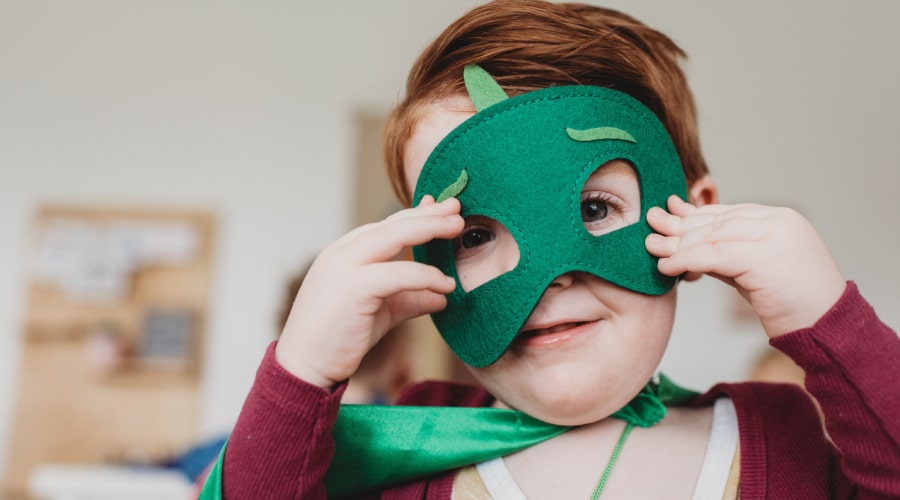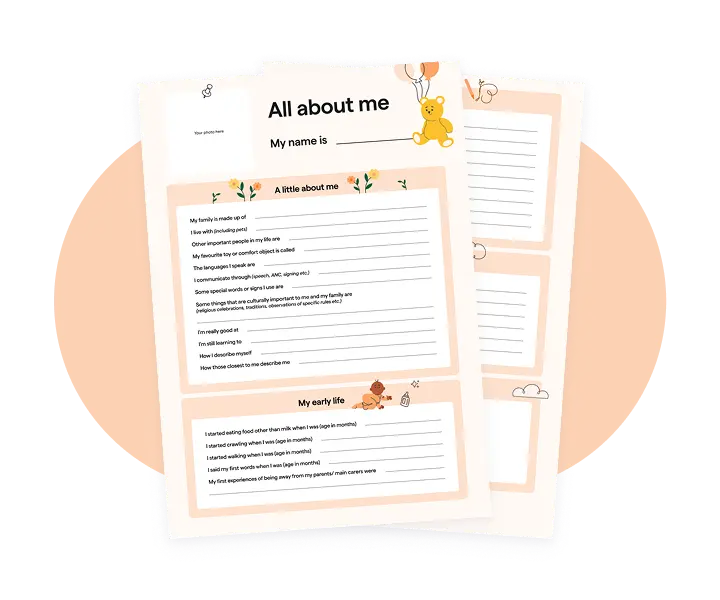settings
children
With Famly since
When I began to develop an audit on neurodiversity and anti-ableism in the early years, I was cautious to avoid inadvertently suggesting that ableism can simply be eliminated by ticking boxes. Ableism is based on the structural ways society favours those with able bodies and typical minds, including within our early years' education system. To address its existence requires a collective rejection that there is a right or "normal" way of being. In tackling ableism, we must acknowledge that our aim towards inclusion is a journey of becoming rather than a state of being (Nutbrown, 2016). And so, it made more sense to develop a reflection tool that, if used as part of a wider commitment to neurodiversity-informed practice, can become a companion in scaffolding our thinking. In this article, I will introduce the reflection tool and share some of my reflections.
1. Starting Point Reflection
I am often part of discussions on the complexity of language in inclusion. It is one of those areas where many terminologies are used, and it can feel both isolating and frustrating. I sometimes think, "...so long as our practice is good, does it really matter what language practitioners are using?". Truthfully, our language matters when describing children with developmental differences or who we might traditionally call Special Educational Needs (SEN). Why? Because language shapes the lived reality of those individuals. They can be restricted or empowered when we talk about who they are and their ways of being. The first reflection, therefore, addresses the importance of reframing our language and embracing the concept of neurodiversity in early education.
Glossary of useful terms
The first section of your reflection tool (linked at the bottom of this article) contains a short glossary of key terms on page 2. Have a read through these to make yourself familiar.
- How do you feel about this terminology?
- Do you believe that the term Special Educational Needs (SEN)is still fit for purpose?
- How might you support others in developing their knowledge of neurodiversity and ableism?
Neurodiversity Informed to Neurodiversity Affirming
It is common nowadays to hear many people refer to themselves as "neurodiversity affirming," including myself. It is great to see this shift in approach to developmental differences. However, is the transition from a deficit approach to an affirming one that straightforward? Referring to my earlier point of inclusion being a process of becoming, I have found myself much more cautious in saying I am neurodiversity-affirming. In reality, I am still making myself informed of what neurodiversity actually is and attempting to deconstruct ableist practices. Many of us have been primed and trained to view developmental differences as problems to be fixed or as "red flags". Many of us have been trained to spot the myriad of so-called impairments and deficits in children and then use strategies to reduce them. Instead, we need to be given the full picture of lifelong differences to develop an increased understanding of the holistic profiles of neurodivergence. Only then can we engage in unlearning and new learning, which takes time. To summarise, neurodiversity-affirming practice results from active and ongoing interrogation of our inclusive practices rather than being a fixed professional identity. And so, across these reflections, we will consider what this active and ongoing process might look like.

2. Reflection: The Comfort & Curious Zone
I sat comfortably in my comfort zone for many years. As an area SENCO, I possessed a certain saviour outlook, meaning I thought that by working with SEN children, I was, by default doing good (and how dare anyone question it). I unwittingly adopted the policies, procedures and practices for so-called inclusion without asking about their value. I trusted in the training and qualifications I received. Rarely did I examine the language I was using or the interventions I was carrying out. As far as I was concerned, I was a good SENCO helping children by identifying the problems and seeking to reduce them. But then, a few experiences catapulted me right out of my comfort zone:
- I got called out by a parent for my language: I was often bewildered why parents were so disengaged with early intervention when I was trying to help them and point out their child's "red flags". And then, one day, a parent turned to me in deep distress when I asked them to explain their child on their worst day so that I could secure funding, and her response was, "do you know how soul-destroying it is only ever to describe your child on their worst day. Why does no one ask me about the good days?". This illustrates the toll a deficit approach can take on parents, and I knew then I had reframe how I spoke about children.
- I could have provided better advice: Despite being an area SENCO and viewing myself as the authority on all things inclusion, my advice was often ableist and focused on training the child to mask their traits so that they would fit in. Time and time again, educators would return to me and say, "this isn’t working; what now?". While my advice came from a good place, it did not match the diverse ways children develop. I had several go-to strategies in my back pocket, but on reflection, they were focused on enforcing neurotypicalism and not on affirming divergent traits. I knew then that I need to go beyond the stereotypes, tropes and misconceptions and learn from disabled and neurodivergent people.
There were many other moments, but the two reflections above highlighted that the comfort zone could only keep me comforted for so long, and so I had to become more curious in my work.
Take a look at page number 5:
- Do any of the comfort zone statements resonate with you?
- Is there anything in particular that you are finding difficult to address?
- Is there anything that has "catapulted" you beyond your comfort zone?
The big ideas

3. Reflection: The Learning Zone
For a long time, I often felt that the way we approach inclusion wasn't always the best, and it never sat right with me that the focus was often on fixing or curing children of their "SEN". I would often refer to a strengths-based approach to try and level this perspective (which remains crucial within our practice), but it didn’t feel powerful enough on its own to challenge the deficit way of thinking. Once I discovered the concept of neurodiversity, it felt like a gateway to many new possibilities for changing how we view and implement inclusion. One of the most significant aspects of the neurodiversity movement is that it is led by actually neurodivergent and disabled people, and it exists on the premise that hearing from people with the lived experience of difference and disability is key to true understanding. Traditionally, we see non-disabled and non-neurodivergent "experts" lead on knowledge sharing in the early years, and this in itself can be ableist. It assumes that those "experts" know more about disability than those people actually living disabled lives.
Take a look at page number six:
- Do you access training and support from neurodivergent or disabled people or organisations led by neurodivergent or disabled people?
- Why is it important to seek training and advice from those with direct lived experience?
One of the most exciting things about the learning zone is learning from actually neurodivergent and disabled people. I am autistic and ADHD, and in the initial days after diagnosis, I felt isolated and alone. Once I discovered others for whom I could resonate my lived experience, there was an explosion in learning, understanding and self-affirmation.

4. Reflection: The Growth Zone
The Growth Zone is the point at which we begin to actively change and adapt new practices based on how informed we have become about neurodiversity and ableism. This is the space in which we take those risks to do things differently than we have before and to acknowledge that the journey itself is not linear but will have its highs, lows and in-betweens. A particular growth moment for me was when I learned that autistic children often acquire language differently from their neurotypical counterparts. For so much of my own career, I was told that when an autistic child repeated a phrase or sound, often referred to as echolalia; it should simply be ignored because it had no meaning. And then, one day, I heard about a term known as "delayed echolalia" and how this could indicate that a child had a different way of learning language and that the repetition of certain sounds and phrases absolutely did have meaning. I was suddenly taken back to the number of autistic children I had cared for, and so much of their communication now made sense. I had unknowingly been hearing delayed echolalia across my entire career and could only now make sense of it. It can be easy to feel depleted in those moments of learning and growth where we look back and think, "if only I had known", but we cannot change the past, only how we take this new knowledge forward. I was unknowing, but I make sure everyone I speak to is in a place of knowing.
You can find out more about delayed echolalia here:
Take a look at page number 7:
- What is an example of a growth moment in your own practice?
- How did it make you feel to gain new knowledge and ways of being?
Conclusion
We are in a moment of possibility in the early years. As a sector, we are under the most immense pressure we have ever experienced, and the thought of change, unlearning and relearning likely feels like a daunting and exhausting prospect. Much of that immense pressure feels beyond our control, but within inclusion, we do need to move beyond doing the same thing repeatedly and expecting a different outcome. Things cannot remain as they are. It is time to try for a different outcome!
Try learning journals for free
Add observations, and build digital learning journals to share with families instantly. All with your completely free 14-day trial.
Get started









